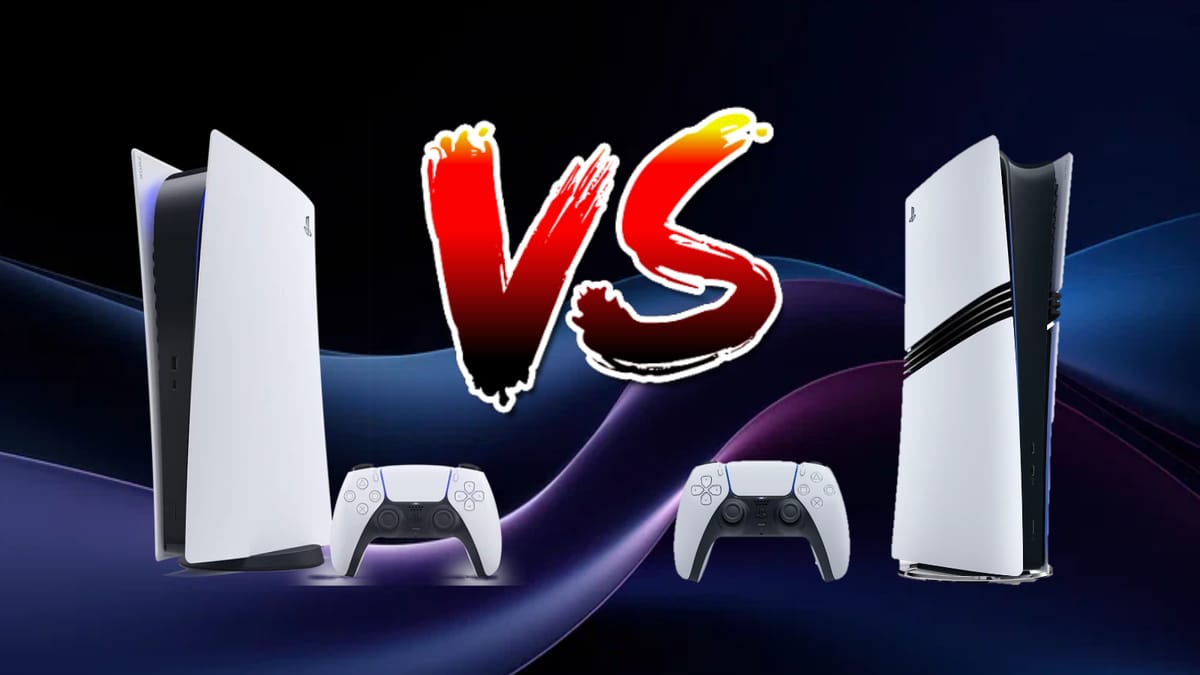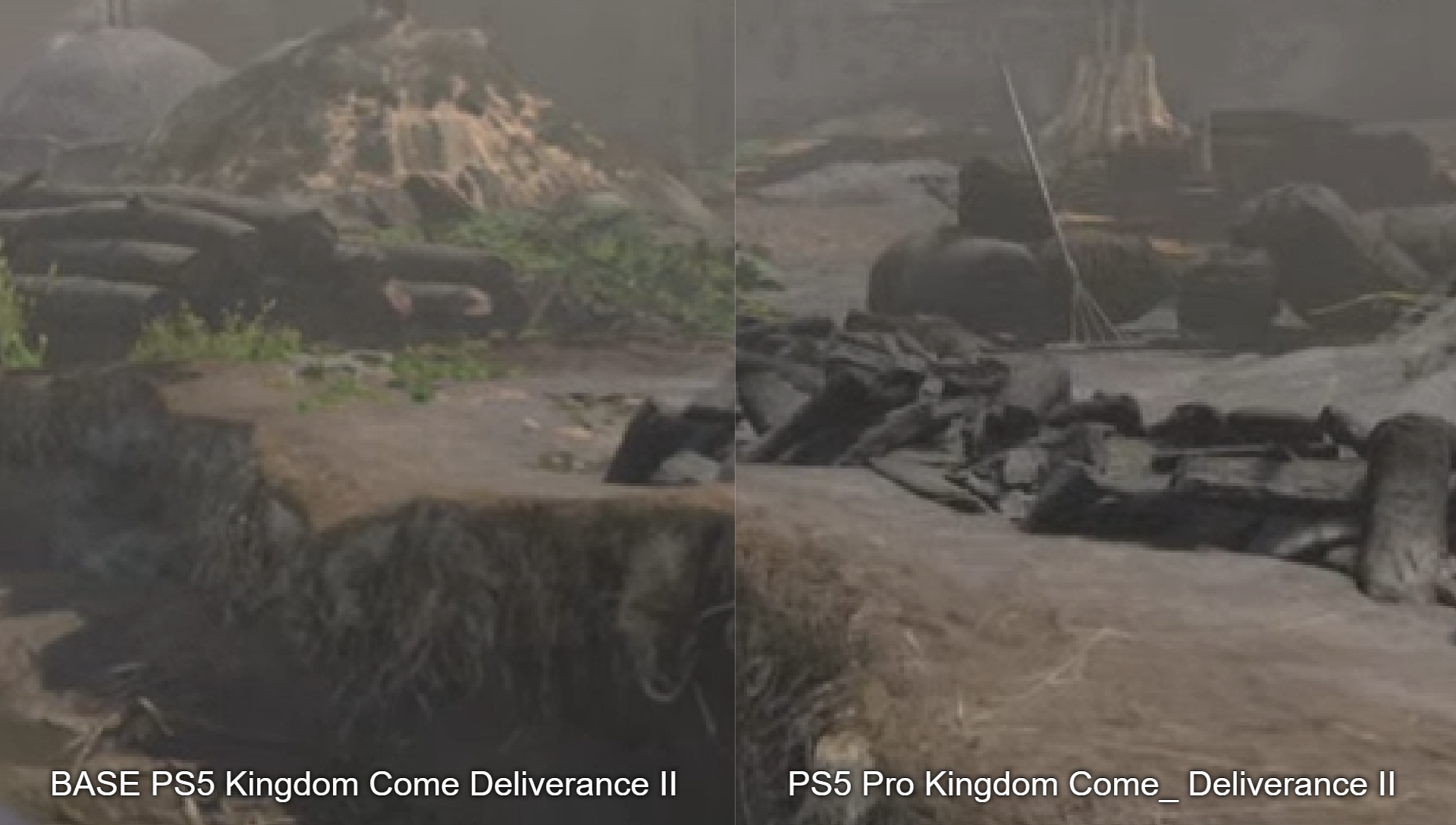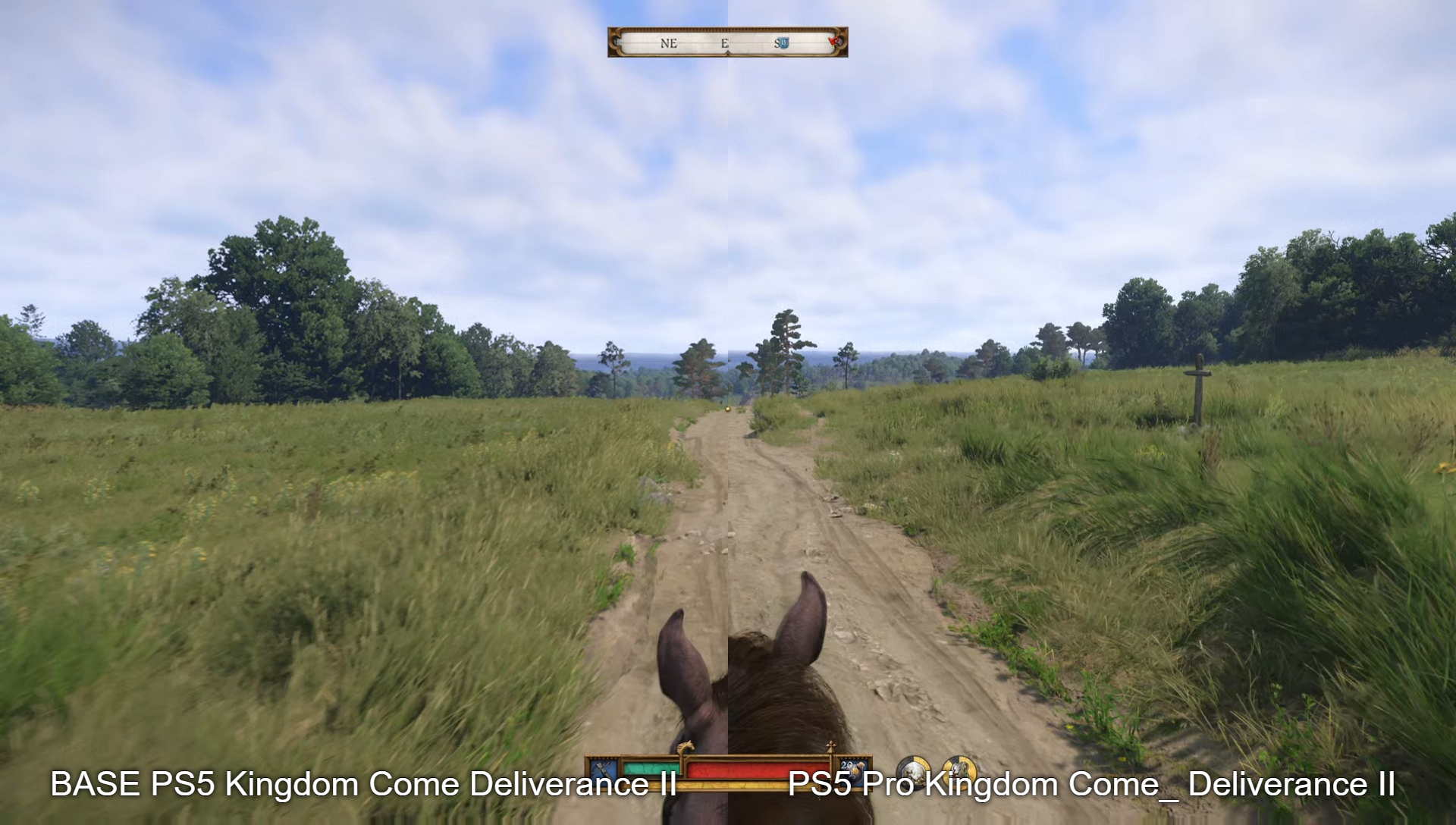
The PlayStation 5 Pro was released on November 7, 2024, representing Sony's mid-generation enhancement of its ninth-generation console. Building upon the foundation of the original PlayStation 5, the PS5 Pro introduces several hardware and performance upgrades aimed at delivering a smoother user experience, as well as a solid improvement to visual fidelity. Now, four months after its release, let’s take a look at where we stand on the PlayStation 5 Pro.
Hardware Enhancements
There are a number of software and hardware enhancements that push this device from the launch PlayStation 5 to something worthy of the designation “Pro”. First and foremost, the GPU has gotten a huge upgrade, moving from the original device’s 36 compute units and 10.28 teraflops of graphical processing power to nearly double – 60 compute units and 18 teraflops – a substantial, if not linear increase. Naturally this will have huge improvements to framerate, but it also provides headroom for some additional software upgrades like AI-assisted upscaling that we’ll touch on later.
In addition to the upgraded GPU, the system memory bandwidth has been given some attention. The PlayStation 5 shipped with 16GB of GDDR6 with a memory bus speed of 1.4 GHz and an overall bandwidth of 448GB/s. It also has an additional 512 MB of DDR4 SDRAM used for the operating system and any related activities. The PlayStation 5 Pro upgrades this to 16GB of GDDR6 with increased memory bandwidth resulting in an increase to 576 GB/s. Additionally, that 512 MB of DDR4 has been bumped to 2GB of GDDR5. We don’t have stats on speeds and feeds for this additional bit of memory, but we do know that it’s used for the operating system, as well as new features like hardware ray tracing improvements, PSSR, and more.
Quantifying this a different way, the PlayStation 5 Pro provides 67% more compute units, 28% faster RAM (and more of it), resulting in a console that’s 45% faster on paper.
The upgrade to base storage is a welcome one. The PlayStation 5 base advertises 1 TB of onboard storage. This breaks down to an actual container space of 825 GB, but with 157.8 GB of storage being used for the operating system and associated applications, you’ll have roughly 667.2 GB of usable space. The PlayStation 5 Pro jumps up to 2TB of installed storage, with 1.89TB available for users – a welcome upgrade for those meaty Call of Duty patches. Both consoles also have a user-expandable internal slot to add a “PS5 Compatible” NVMe hard drive.
There are a number of manufacturers making drives that state that they are “PS5 Compatible”, but in truth, the PlayStation 5 and PlayStation 5 Pro will use any M.2 2230/2242/2260/2280 SATA III or PCIe 4.0 NVMe solid-state drive. You could even use a PCIe 5.0 NVMe drive, but I’ll explain why that would only cost you money, and for no returns. The internal storage drive delivers roughly 5500 MBps for both read and write – coincidentally the exact specs that serve as the minimum requirements. As new PCIe 5.0 drives start hitting the market, the price of PCIe 4.0 drives will plummet, but grabbing a drive capable of 10,000 MBps will just top out at 6500 MBps anyway – you can’t exceed the bus. That’s why we’ve recommended drives like the Seagate FireCuda 520, Samsung 990 Pro, and Western Digital Black SN850. Sure, you can grab something far faster like the Samsung 9100 Pro, but you’ll only be wasting the difference in price. Both consoles support a user-added drive up to 8TB, which is more than enough to hold more games than you likely want to juggle. Just make sure the heatsink is compatible with the console – there is a max height of 11.25mm.
Another welcome addition to the hardware is a move to Wi-Fi 7. The PlayStation 5 shipped with Wi-Fi 6, but the Pro pushes this to the latest standard. In practice, the base console taps out at 500 Mb/s for download speed, with the Pro doubling this to a full 1 Gb/s. If you’ve got an Internet connection capable of taking advantage, that could theoretically cut your download time in half, but there’s another reason why you might enjoy the higher speeds – the Portal.
Our Lead Editor David Burdette uses a PlayStation Portal, Sony’s handheld streaming mini-console, and has had nothing but good things to say about it. This device is capable of streaming from your PlayStation 5 to...well, anywhere you’ve got a stable connection. With Wi-Fi 7, if you happen to be on the same network, you can enjoy a far faster throughput for that device, allowing you to stream whatever game you’re playing at 1080p/60fps using PlayStation Portal Remote Player. It is odd to see the Wi-Fi 7 speed somewhat constrained as the protocol is capable of 46Gbps – a 5x increase over its predecessor. Here we see that reduced to just 1000 Mb/s. It’s enough, but I can’t help but ask why. At least it’s now matching the 1GBps RJ-45 Ethernet connection, and that’s something.
There is a small (but likely welcome) change to the front of the PlayStation 5 Pro. The USB type-A port that sits next to the USB Type-C port on the PlayStation 5 has been replaced with a second USB Type-C. Unfortunately, there is a small cut corner here as that’s only high-speed USB versus the other port which is Super-Speed USB. Since IEEE is awful at naming conventions, let me put it another way. This port is better known as USB 2.0 which maxes out at 480 MBps, and you'll find that out when you attempt to use it for an external storage device as the PlayStation will simply tell you it's not fast enough. Why they couldn't go with a USB 3.2 Gen 1 at 5Gbps or match it with the other three USB 3.2 Gen 2 ports, but I suspect this is a motherboard limitation more than a conscious choice.
You’ll note that there’s one component I’ve not talked about – the Disc-Drive. Sony and Microsoft have both pushed towards streaming and digital-only games, but many folks (myself included) prefer a physical disc. To ensure the price stayed as low as possible, Sony introduced the PlayStation 5 without a disc drive. If you find that you need one, you’ll need to pick one up after the fact for an additional $79 at the official site.
If you’re the type that worries about the size of a console, the PlayStation 5 Pro is 15.2 x 3.5 x 8.5in compared to the PlayStation 5’s 14.1 in x 3.8 in x 8.8 in. The original console weighs in at 7.1 lbs, with the Pro getting a slight diet down to 6.8 lbs.
Software Features
There are a number of software features that are exclusive to the PlayStation 5 Pro. The first and most significant is PlayStation Spectral Super Resolution, or PSSR. While AI-based upsampling isn’t new on the PC side, with DLSS (Deep Learning Super Sampling) now on its 4th iteration, AMD’s FSR 4 coming soon, and Intel’s XeSS offering a vendor-agnostic upsampling solution, PSSR is the first AI-driven upsampling system available on consoles. PSSR operates in a similar fashion to the aforementioned upsampling technologies, utilizing massive neural networks to study and analyze millions of images to understand how to take a frame rendered at a lower resolution and then re-render it at a full 4K, with all details intact. As the original frame is being rendered at a lower resolution, there is more hardware available to handle other things like complex lighting, or simply enough room to breathe to provide a stable high framerate. The neural network is also able to retouch images, providing smoother edges, improved aliasing, and cleaner texture outputs, all with the benefit of Ray Tracing to provide more realistic lighting and reflections without taking a massive performance hit. Better still, it doesn’t require developer integration to function, with the AI model improving the more hours it crunches on the game. Lead Architect Mark Cerny will explain it far better than I ever could:
As Mark explained, our choice of Fidelity mode at 30fps versus Performance mode at 60fps gives way to being able to run at Fidelity levels of detail but at Performance framerates. Demonstrated with The Last of Us Part II (Full improvement trailer here), Marvel’s Spider-Man 2 (Full improvement trailer here), and Ratchet and Clank: Rift Apart (Full improvement trailer here). In all three you can see that the quality of the image is vastly improved while still maintaining the additional speed afforded by the additional GPU power. In addition, we see the purported “double or even triple calculation speeds” resulting in improved realtime lighting and shadows thanks to improvements in the GPU – something we’ve seen in nearly every generational uplift on PC videocards.
The additional power of the PlayStation 5 Pro is allowing developers to add additional visual tweaks to their already-released games. Polyphony Digital revisited Gran Turismo 7 and added realtime Ray Tracing to multiple elements on cars while simultaneously maintaining 60fps. We see similar improvements made to games like Hogwarts Legacy, Alan Wake II, Final Fantasy 7 Remake, Dragon Age: The Veilguard, and Mortal Shell, just to name a few. In fact, at the time of writing, there are nearly 100 games out or coming shortly with direct support of the PlayStation 5 Pro, designated with a small icon in the PlayStation Store.
As backwards compatibility continues to be a major feature for Sony, they’ve introduced a new feature called Game Boost to the PlayStation 5 Pro. Game Boost can enhance the performance, and occasionally, the visuals of PS4 and PS5 games, whether they’re directly supported or not. It’s not AI based, instead utilizing the increased CPU and GPU power to boost games that have unlocked framerates or dynamic resolution such as Assassin’s Creed Valhalla, Assassin’s Creed Shadows, the Call of Duty series, DOOM Eternal, MLB The Show from 22 to 25, Resident Evil 2, 3, 4, and 7 (8 has native support), and Rainbow Six Siege as a sampling. Older titles, even on PlayStation 4, will benefit from smoother framerate as there’s simply more to go around. Similarly, the improved SSD and memory bandwidth will also reduce loading times, possibly improving streaming in open world games. Obviously having a developer directly patch in improvements will result in more bells and whistles, but just having additional power will allow games to run better than before.
Sony’s PlayStation VR 2 headset is also able to benefit from PSSR, improving framerates and overall smoothness, making it less likely to turn your gills green. Arken Age's developers confirmed a 15% resolution boost for 90fps "Performance Mode" and a 25% resolution boost when using 60/120 reprojected "Quality Mode". There are similar improvements for Better Than Life, cyubeVR, Kayak VR: Mirage, No Man's Sky, Oniriam, Subside, Dreams of Another, Smash Drums, and more. Ultimately, this is driven by additional raw power, combined with being able to render at a lower resolution and then upscale it to a higher resolution with PSSR. It’s likely we’ll see this list grow, but it’s not moving at the pace of the pancake screen games, obviously.
How much does it matter?
The only metric that matters is how players can perceive the upgrades offered by the PlayStation 5 Pro. Obviously tech like Game Mode is going to make more of a difference on some games more than others. PSSR doesn’t necessarily require a developer patch, but when companies line up behind the PS5 Pro’s advanced features, you end up with more features than cleaner and faster framerates. For example, Horizon Forbidden West is not only faster, it has new lighting and shadow systems, improved hair and skin rendering, and 60fps while running at 4K resolution.
Alan Wake II’s developer Remedy knocked it out of the park for the PlayStation 5 Pro. Similar to what you see with DLSS on PC, you can now enable a new “Balanced” graphics option, offering visual improvements like hardware ray tracing in Quality Mode, but with 4K resolution, targeting 30fps. You can also disable PSSR and utilize the old Quality and Performance toggles, though that will also disable ray tracing in the process. If you’d like a closer look at what Remedy did to embrace the PlayStation 5 Pro’s new components, check out their extensive blog on the topic.
Sprinkled throughout this article are examples of our captures running side-by-side, captured from the base PlayStation 5 and the PlayStation 5 Pro. They’re as synchronized as possible, but even in areas where they aren’t 1:1, it’s immediately clear that there is an overall clarity that is achieved by this hardware refresh. In the case of Final Fantasy 7 Rebirth, you can see that skin texture is cleaner, and there is additional detail in Cloud’s armor.





Final Fantasy VII Rebirth PlayStation 5 Base vs. PlayStation 5 Pro
The primary differentiator for a game to be “worth it” on the PlayStation 5 Pro is how much effort the team behind that game have put into improving it. Games like Assassin’s Creed Shadows are night and day different, as are games like Gran Turismo 7 and No Man’s Sky. You have to look a little harder in Final Fantasy 7 Rebirth, but there are details you’re missing and may not realize it on the base PS5. If you have a PlayStation 5 and PSVR2, the upsampling technology at play might make the difference between nausea and having a whole lot more fun. It really is a game of inches most of the time, but there’s one thing that’s always at play – performance.
Every single game we tested, without exception, benefits from the additional power under the hood of the PlayStation 5 Pro. That’s better framerate, that’s cleaner frame pacing, and all of that without compromising image quality. It’s the best of both worlds, often approximating settings at or near “High” or “Ultra” settings on a PC equivalent. It might be hard to see without doing a side-by-side comparison, but having done that homework I can tell you that it’s very visible, provided the rest of the hardware in your chain (VRR-capable, HDR10 TV, etc.) is there to match it.




Kingdom Come Deliverance IIPlayStation 5 Base vs. PlayStation 5 Pro
Price and Value:
We need to talk about the price of the PlayStation 5 Pro, because that’s the elephant in the room. It turns out, it’s a $699 elephant at that. While you blink away the shock, you should understand that there’s actually some justification for the price. The base PS5 will set you back either $499 for a system with an optical disc drive, or $449 for the all-digital version, asking for $250 above the digital console. The move from 1TB to 2TB will cost you $149, using the Western Digital Black SN850 2TB NVMe drive as a benchmark. That leaves $100 on the table for the improved Wi-Fi 7 (hamstrung that it is), vastly upgraded GPU, CPU, and memory, and the tiny upgrade of that front USB-C port. In terms of software, you’re effectively getting PSSR and Game Boost for free, even though it’s arguably the most valuable of all the upgrades. Coming from the PC world, I’m used to generational eye-wateringly high prices of technology.
If I had to put my thumb in the air and gauge where the PlayStation 5 Pro lands against a PC equivalent, I’d spec it this way:
CPU:
AMD Ryzen 7 5800X ($169)I’m normally an Intel guy, but to best approximate what Sony’s platform has under the hood, it’s AMD’s 8-core/16-thread processor as it closely approximates the custom Zen 2. Memory: G.SKILL Trident Z5 Neo ($169)The PlayStation 5 Pro uses GDDR6 memory, which is purposely optimized for graphical processing. While there isn’t a direct 14000MHz equivalent (yet), doubling the amount and using it in dual channel might approximate what the PS5 Pro is working with.
Motherboard:
GIGABYTE B650 AORUS Elite AX ($176)There isn’t a reasonably-priced board with Wi-Fi 7, so we settle for 6E here, but it has DDR5 memory support and is a solid performer.
Storage:
Western Digital Black SN850X 2TB NVMe ($145)The aforementioned Western Digital Black SN850X 2TB NVMe is the closest equivalent to the onboard PS5 Pro storage.
GPU:
NVIDIA GeForce RTX 4060 Ti ($569)The closest analog is the RTX 4060 Ti, with 16GB of memory, and roughly the same clock speed. It also has DLSS 3, which is fairly close to the PS5 Pro’s PSSR implementation in practice.
PSU (Power Supply):
CORSAIR CX550 500W PSU ($59)Compared to how power-hungry a PC can be, the PlayStation 5 Pro and PlayStation 5 are almost laughably low-power consumption. The PS5 will use around 220W of power when you’re playing an intensive game that uses everything under the hood. The PlayStation 5 Pro will land around 230W for that same scene, albeit with all the GPU-powered improvements. Meanwhile, a quick check of my PC while writing this document shows that I’m using almost 100W right now, running a lower-end GPU. I don’t even want to know what the 5090 is drawing. There are cheaper PSUs, but I prefer names I can trust.
Case: NZXT H5 Flow ($89)
Obviously this is a proprietary case Sony has made, but the closest approximation would be a mid-tower. This one comes with fans.
OS: Windows 11 Pro ($99)
There’s no direct equivalent to Sony’s OS for the PlayStation 5, of course. A copy of Windows is around $99, or you could run Linux for free to save costs.
Controller: PS5 DualSense ($69)
To match 1:1 you’ll need a controller. No reason not to buy the real thing since it works with PC.
PC Total Cost: ~$1564 USD
PlayStation 5 Pro: $699 USD
Obviously there are pros and cons for both platforms around upgradability, closed environment vs. open, ease of use, and more, but it’s pretty clear to me that the price Sony is asking isn’t as inflated as you might believe. Somebody will inevitably call me some sort of Sony apologist, but the numbers don’t lie.
PlayStation 5 Pro
Excellent
While there is some sticker shock, the upgrade is not only justified, but frankly a bit less than the value it provides in return. While not every game will take as much advantage, the ones that do are absolutely gorgeous. The advancements in PSVR2 and the fact that it’ll even help older and non-patched games are just icing on the cake. Necessary? Maybe not. Noticeable? Absolutely.
Pros
- Real visual upgrade for many games
- PSSR upsampling is well-executed
- Improves old games and new to some degree
- Upgrades to PSVR2 was a nice surprise
- Still some power to spare
- Bumps to WiFi and storage are welcome
Cons
- Some sticker shock
- Dev patches required for maximum impact
